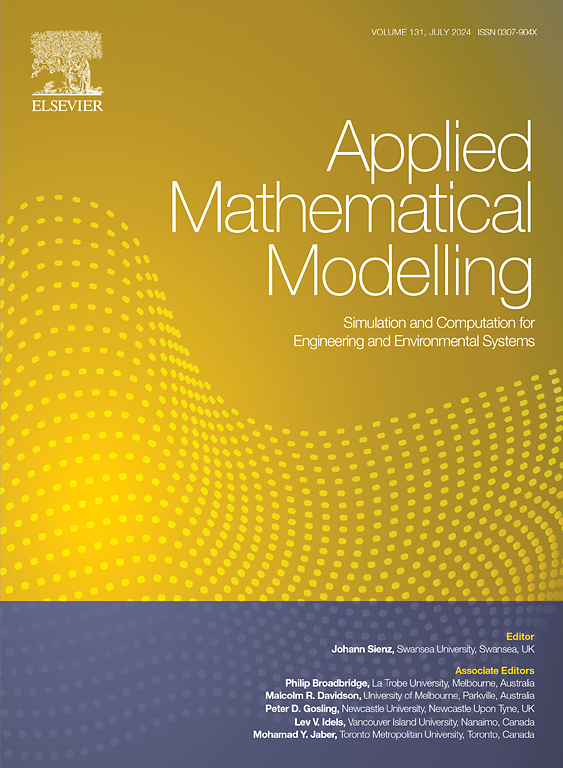Kinematically incompatible Föppl-von Kármán plates: Analysis and numerics
IF 4.4
2区 工程技术
Q1 ENGINEERING, MULTIDISCIPLINARY
引用次数: 0
Abstract
This work investigates isotropic thin plates where out-of-plane deformations arise due to membrane kinematic incompatibility of rotational type, specifically Volterra wedge disclinations, which are commonly observed in metal plates and graphene. Theoretical results are presented to guarantee the existence and regularity of equilibrium solutions in the presence of a finite number of disclinations and a dead load, under clamped boundary conditions. To solve the equilibrium equations, a numerical implementation is developed and applied to a series of parametric test studies. The finite element method adopted follows the Discontinuous Galerkin approach using continuous elements.
运动不相容Föppl-von Kármán板:分析和数值
这项工作研究了各向同性薄板,其中由于旋转类型的膜运动不相容而产生的面外变形,特别是在金属板和石墨烯中常见的沃尔泰拉楔形斜位。给出了在固定边界条件下,在有限数目的偏差和恒载存在下平衡解的存在性和规律性的理论结果。为了求解平衡方程,开发了一个数值实现,并将其应用于一系列参数试验研究。采用的有限元方法遵循连续单元的间断伽辽金方法。
本文章由计算机程序翻译,如有差异,请以英文原文为准。
求助全文
约1分钟内获得全文
求助全文
来源期刊

Applied Mathematical Modelling
数学-工程:综合
CiteScore
9.80
自引率
8.00%
发文量
508
审稿时长
43 days
期刊介绍:
Applied Mathematical Modelling focuses on research related to the mathematical modelling of engineering and environmental processes, manufacturing, and industrial systems. A significant emerging area of research activity involves multiphysics processes, and contributions in this area are particularly encouraged.
This influential publication covers a wide spectrum of subjects including heat transfer, fluid mechanics, CFD, and transport phenomena; solid mechanics and mechanics of metals; electromagnets and MHD; reliability modelling and system optimization; finite volume, finite element, and boundary element procedures; modelling of inventory, industrial, manufacturing and logistics systems for viable decision making; civil engineering systems and structures; mineral and energy resources; relevant software engineering issues associated with CAD and CAE; and materials and metallurgical engineering.
Applied Mathematical Modelling is primarily interested in papers developing increased insights into real-world problems through novel mathematical modelling, novel applications or a combination of these. Papers employing existing numerical techniques must demonstrate sufficient novelty in the solution of practical problems. Papers on fuzzy logic in decision-making or purely financial mathematics are normally not considered. Research on fractional differential equations, bifurcation, and numerical methods needs to include practical examples. Population dynamics must solve realistic scenarios. Papers in the area of logistics and business modelling should demonstrate meaningful managerial insight. Submissions with no real-world application will not be considered.
 求助内容:
求助内容: 应助结果提醒方式:
应助结果提醒方式:


